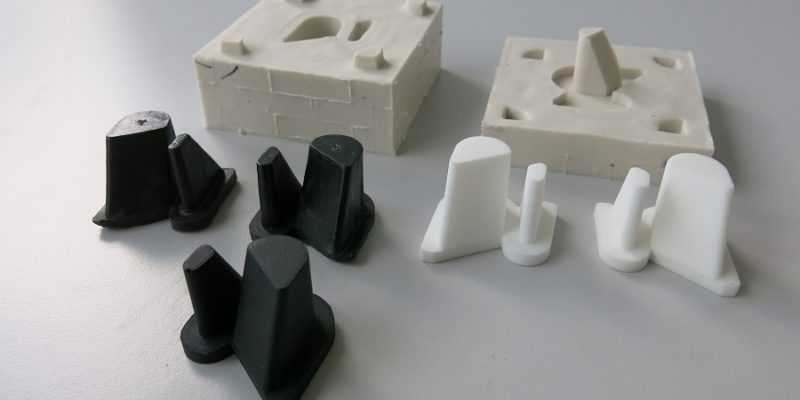Urethane casting is a manufacturing method using a silicone mold to shape urethane parts to produce a prototype and low-volume parts. The pieces are made out of plastic or rubber-like materials. Urethane casting is a great, high-quality, low-cost way to produce components and complete models. For comprehensive designs, it also works well, easily producing a high-quality finish and without the high price tag of other methods.
A manufacturing process that reliably produces flexible or rigid plastic parts at the quality level of output, but without the costs associated with injection molding. Urethane casting appears to have two primary uses for this reason: prototyping and low-volume production runs that do not warrant the expense of hard tooling the hat takes time.
Cast urethane is also used as a bridge between mass production and custom parts of prototyping services. The process, cost-effective and flexible, can be used to produce components in a variety of sizes, durometers, materials, and colors while still delivering material value at the production level.
The ability to produce several prototypes rapidly ensures that improvements can be easily implemented and retested, making urethane casting an ideal tool for customer testing or end-user parts evaluation. Bridge tooling, also called rapid tooling, is the mechanism between product creation and production. Urethane casting is a consistent, versatile, and accurate process factor for the manufacturing process that is suitable for low-volume production-grade component runs.
Low-volume manufacturing has become increasingly cost-effective and reliable for a wide range of consumer goods and medical devices with the growth of cast urethane soft tools. A high degree of complexity and complexity in the initial construction is assisted by urethane casting. This facilitates the Rapid prototyping parts with small information, geometries involved and varying wall thicknesses to reduce the need for additional passes or development phases that can become costly when performed over a whole production run.
Take a look at the advantages of urethane casting
Since urethane casting produces extremely accurate replicas of the master pattern, the process serves a variety of applications, including parts with overlapping joints or features, or pieces with letters or designs raised or inset. The method also allows the addition of ribs, which can improve the strength and rigidity of cast components. What’s more, with a range of materials ranging from soft and versatile to rigid and impact-resistant, urethane casting can be done.
To produce a specific hue, materials can also be blended. Also, for urethane casting, the production time is quicker than it is for injection molding. The cast urethane parts molds can be laminated and ready for use in two weeks, while the manufacturing of injection molds is more labor-intensive and can therefore take several months to reach the production stage.
- Speed: The method of casting urethane is very rapid since the silicone molds used to make components are made quickly, especially compared to the hard tooling used in injection molding. It is suitable for low-volume output when expenditure in injection mold tooling is not justified by quantities. If the aim is to inject a large number of parts into the mold, but some are immediately needed, then urethane casting is a simple way to acquire first-run parts made before the production tooling is ready. It’s perfect for evaluating product design, for one-off products, or for checking a new product’s demand or customer responses. Urethane cast parts will carry a project to the next stage for end-user testing or short-run development with such a fast turnaround time. It can offer a first-to-market advantage to a company.
- Cost: The liquid poured silicones and healed molds used to cast urethane are much cheaper to manufacture compared with the development of tool-hard injection molds. To put it in perspective, relative to the thousands of dollars it would be for a comparable injection molding project, a casting project could be hundreds of dollars. The best way for urethane casting, CNC machining or injection molding parts to be manufactured will be determined by component quantity. Urethane casting cost offers great value for prototypes and low-quantity parts because the cost is very low, but the quality of the parts is very good.
- Quality: A variety of formulations can be used in the cast urethane process to manufacture parts that are soft or rough, colored or transparent. The silicone molds provide excellent detail on the surface finish and can replicate production textures accurately. Also, pieces may be over-molded, integrated with inserts, and post-process treatments such as painting. Urethane casting produces components with physical features alongside injection molding. Also, urethane casting provides high-quality, durable materials.
Urethane casting process
With a silicone mold, the urethane casting process begins. A master model of the parts will be created by 3D printing or CNC machining to create this mold, then it will be formed by pouring the silicone into a tool imprint of the parts. Then individuals have to mix their urethane, which comes as two different fluids. In a 1:1 ratio or as instructed on the brand instruction, individuals should mix the pieces.
A chemical reaction begins as soon as they combine the two, which transforms them from liquid to solid. People can also hear healing being referred to as vulcanization of room temperature. It may sound more advanced, but it’s the same thing. If they are applying a tint to their resin, before mixing the two liquids, remember to do so.
Mixing the tint may take a while, so this will allow them more time. If they add the tint to the combined resins, before they have thoroughly mixed it, the urethane can begin to set. If the tint has been blended, individuals will combine sections A and B of their urethane. Stir this for 10-20 seconds and can then pour it into their mold carefully. Leave the urethane for about 1 hour to recover, although individuals may follow the timing instructions of the brand.
Remember to always read their safety details, too, and they will teach anyone all about pot life and methods of pouring. When the resin has been fully repaired, extract it easily from the silicone mold. Up to 20 times, they can repeat the procedure.













